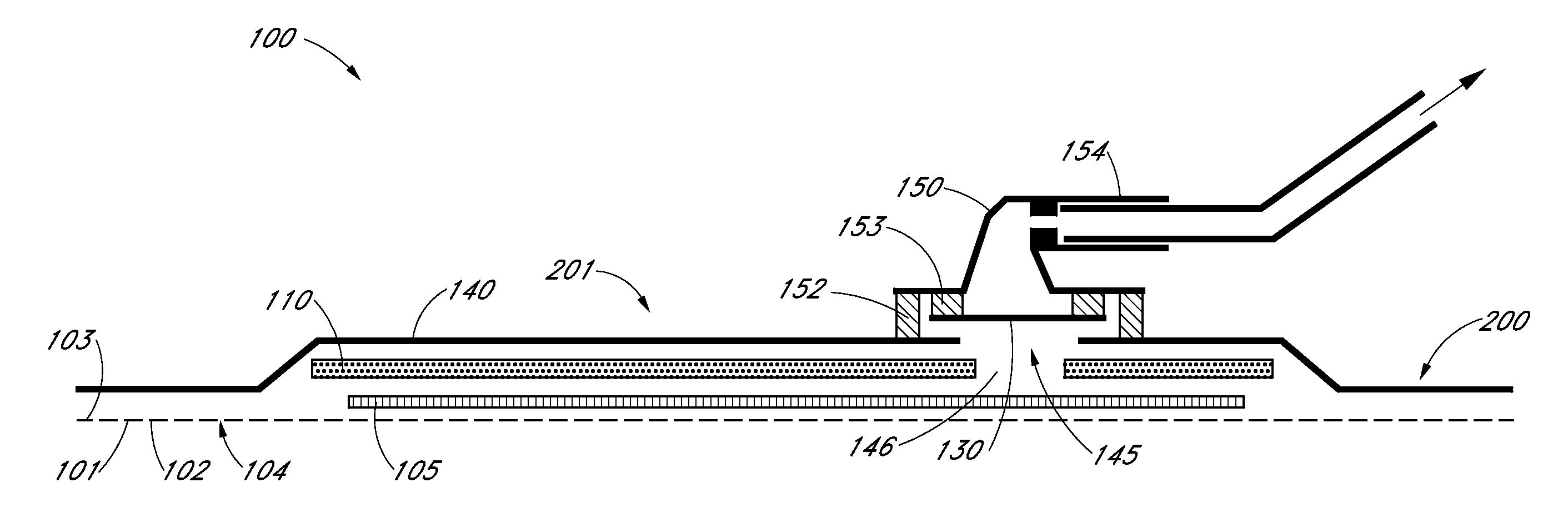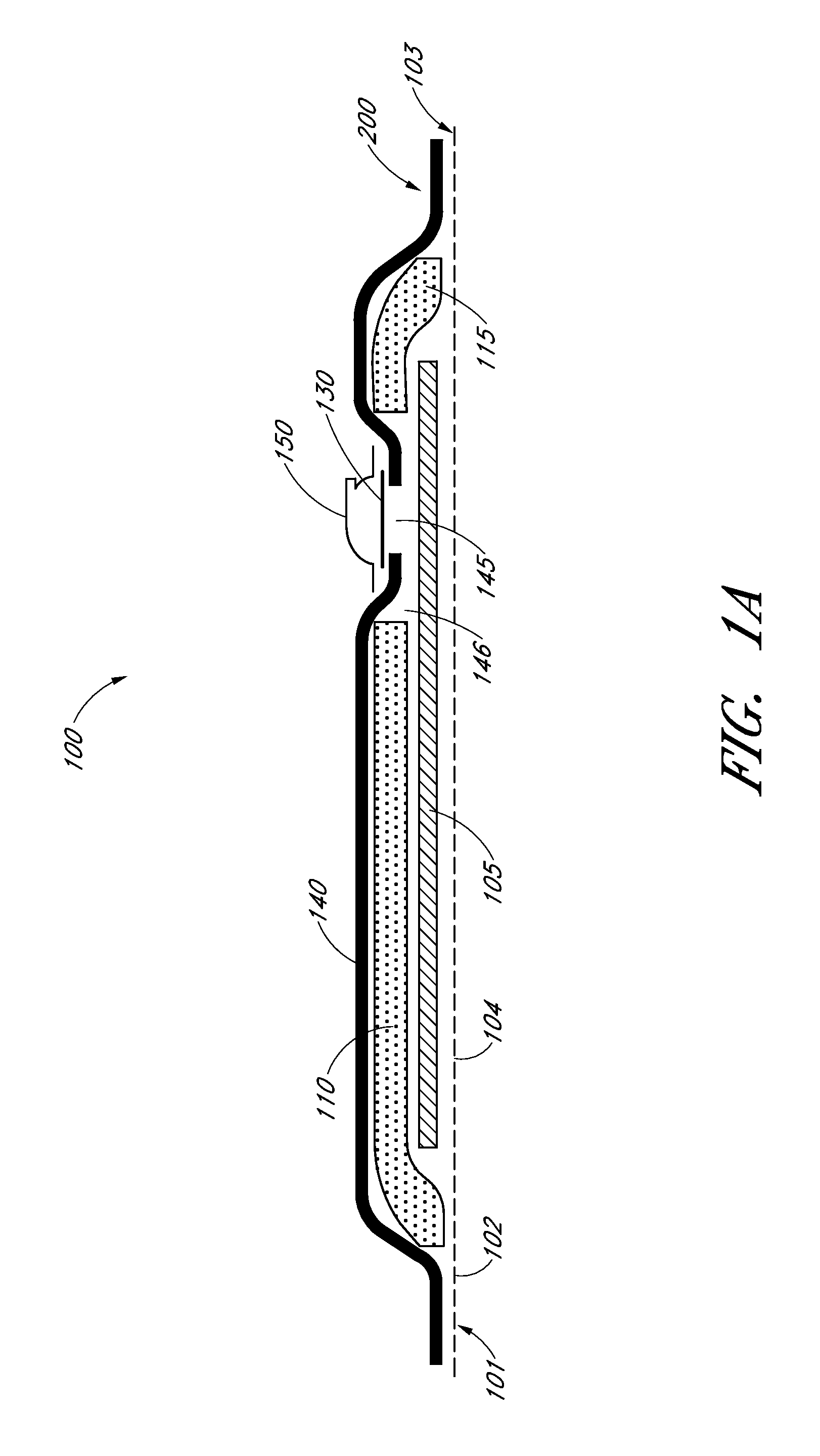Wound dressing and method of use
a wound and negative pressure technology, applied in the field of wound dressings and wound treatment, can solve the problems of difficult storage of exuding material in wound dressings, costly and bulky provision of canisters, and difficulty in ensuring the safety of wound dressings,
- Summary
- Abstract
- Description
- Claims
- Application Information
AI Technical Summary
Benefits of technology
Problems solved by technology
Method used
Image
Examples
Embodiment Construction
[0132]FIGS. 1A-B illustrate cross sections through a wound dressing 100 according to an embodiment of the invention. A plan view from above the wound dressing 100 is illustrated in FIG. 2 with the line A-A indicating the location of the cross section shown in FIGS. 1A and 1B. It will be understood that FIGS. 1A-B illustrate a generalized schematic view of an apparatus 100. It will be understood that embodiments of the present invention are generally applicable to use in TNP therapy systems. Briefly, negative pressure wound therapy assists in the closure and healing of many forms of “hard to heal” wounds by reducing tissue oedema; encouraging blood flow and granular tissue formation; removing excess exudate and may reduce bacterial load (and thus infection risk). In addition, the therapy allows for less disturbance of a wound leading to more rapid healing. TNP therapy systems may also assist on the healing of surgically closed wounds by removing fluid and by helping to stabilize the ...
PUM
| Property | Measurement | Unit |
|---|---|---|
| Pressure | aaaaa | aaaaa |
| Pressure | aaaaa | aaaaa |
| Pressure | aaaaa | aaaaa |
Abstract
Description
Claims
Application Information
 Login to View More
Login to View More - R&D
- Intellectual Property
- Life Sciences
- Materials
- Tech Scout
- Unparalleled Data Quality
- Higher Quality Content
- 60% Fewer Hallucinations
Browse by: Latest US Patents, China's latest patents, Technical Efficacy Thesaurus, Application Domain, Technology Topic, Popular Technical Reports.
© 2025 PatSnap. All rights reserved.Legal|Privacy policy|Modern Slavery Act Transparency Statement|Sitemap|About US| Contact US: help@patsnap.com



